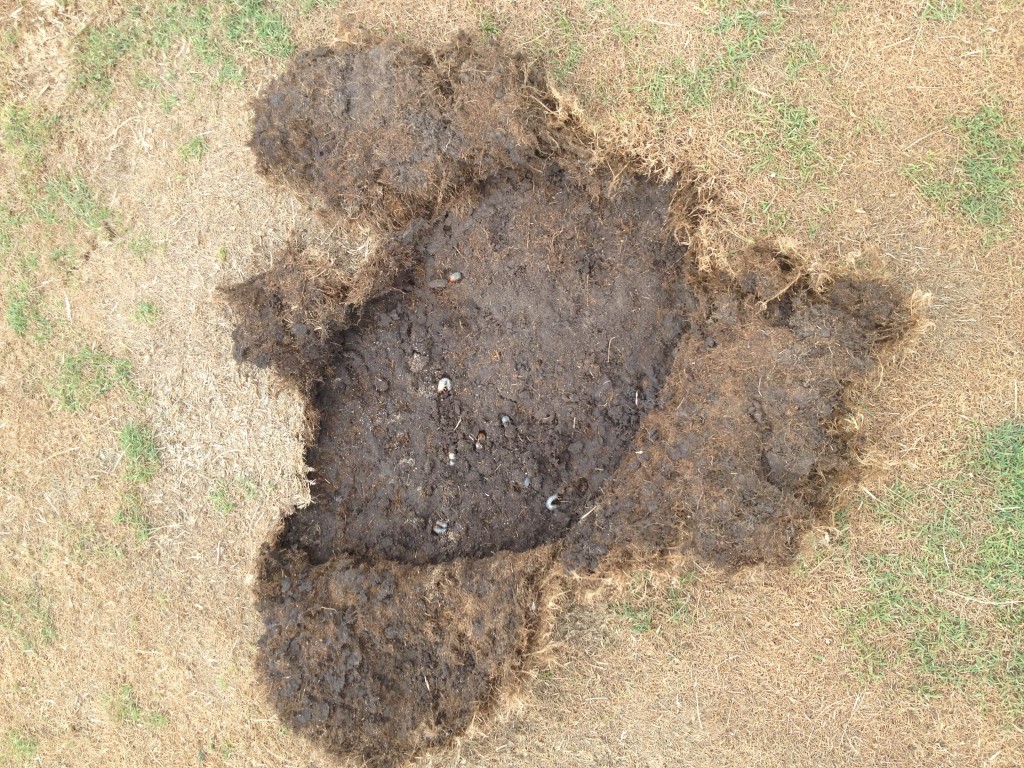(By Jared Hoyle, KSU Turfgrass Research and Extension)
Earlier I posted the Homeowner Step-By-Step Guide to Cool-Season Lawns in Kansas so I decided that it would be good to go ahead and get the warm-season lawn calendar out there for everyone that is manageing zoysiagrass, bermudagrass.
The following is a lawn calendar for zoysiagrass and bermudagrass. Buffalograss, also a warm-season grass, but we will cover that separate because the management of buffalograss is a little different then zoysiagrass and bermudagrass.
For more information check out the Zoyisagrass Lawns Publication at the KSRE Bookstore – https://www.bookstore.ksre.ksu.edu/Item.aspx?catId=545&pubId=1451
For more information check out the Bermudagrass Lawns Publication at the KSRE Bookstore – https://www.bookstore.ksre.ksu.edu/Item.aspx?catId=545&pubId=586
Zoysiagrass and Bermduagrass Lawn Calendar
March
Spot treat broadleaf weeds if necessary. Treat on a day that is 50 degrees F or warmer. Rain or irrigation within 24 hours of application will reduce effectiveness.
April
Apply crabgrass preventer between April 1 and April 15, or apply preventer when the eastern redbud is in full bloom. This year we are getting a little warmer sooner but remember this cold snap that we just had would have killed any crabgrass if it had germinated. If using a product with prodiamine (Barricade), apply two weeks earlier. Crabgrass preventers must be watered in before they will start to work.
May – August 15
Fertilize with 1 lb. of nitrogen per 1,000 square feet per application. Follow the recommendations on the bag. More applications will give a deeper green color, but will increase mowing and may lead to thatch buildup with zoysiagrass. Bermudagrass can also have problems with thatch buildup but thatch is less likely with Bermuda than zoysia. Bermudagrass – Use two to four applications. Zoysiagrass – Use one to two applications. Too much nitrogen leads to thatch buildup.
One Application: Apply in June.
Two Applications: Apply May and July.
Three Applications: Apply May, June, and early August.
Four Applications: Apply May, June, July, and early August.
Remember to look and see if you are using a quick release nitrogen source or a slow release nitrogen source. If you use a quick release source then it is immediately available but only lasts a couple weeks. Thats why you would have to make a couple of applications like it is listed above. If you are going to use a slow release source it will tell you on the bag how long the product will last. Therefore, you might not have to make as many applications.
So generally you want to use a total of 2 to 4lb. of nitrogen per 1,000 square feet per year for bermudagrass and 1 to 2 lb. of nitrogen per 1,000 square feet per year for zoysiagrass.
June
If grubs have been a problem in the past, apply a product containing imidacloprid by mid July. Imidacloprid can be applied as early as mid May if there are problems with billbugs or May beetle grubs. These products kill the grubs before they cause damage. They are effective and safe but must be watered in before they become active. June is a good time to core aerate a warm-season lawn. Core aeration will help alleviate compaction, increase the rate of water infiltration, improve soil air exchange and help control thatch.

Late-July through August
If you see grub damage, apply a grub killer. If Imidacloprid has been applied, this should not be necessary. Grub killers must be watered in immediately.
Late October
Spray for broadleaf weeds if they are a problem. Treat on a day that is at least 50 degrees F. Rain or irrigation within 24 hours reduces effectiveness. Use the rates listed on the label for all products mentioned.
For more information check out the Zoyisagrass Lawns Publication at the KSRE Bookstore – https://www.bookstore.ksre.ksu.edu/Item.aspx?catId=545&pubId=1451
For more information check out the Bermudagrass Lawns Publication at the KSRE Bookstore – https://www.bookstore.ksre.ksu.edu/Item.aspx?catId=545&pubId=586
Always remember to READ THE LABEL for the correct rate, turfgrass tolerance, and specific instructions before application!!!
***Mention of trade names or commercial products in this article is solely for identification purposes and does not imply recommendation or endorsement, nor is criticism implied of similar products not mentioned by Kansas State University.***
Don’t forget to follow me on twitter @KSUTurf.
Also, visit our facebook page www.facebook.com/KSUTurf

